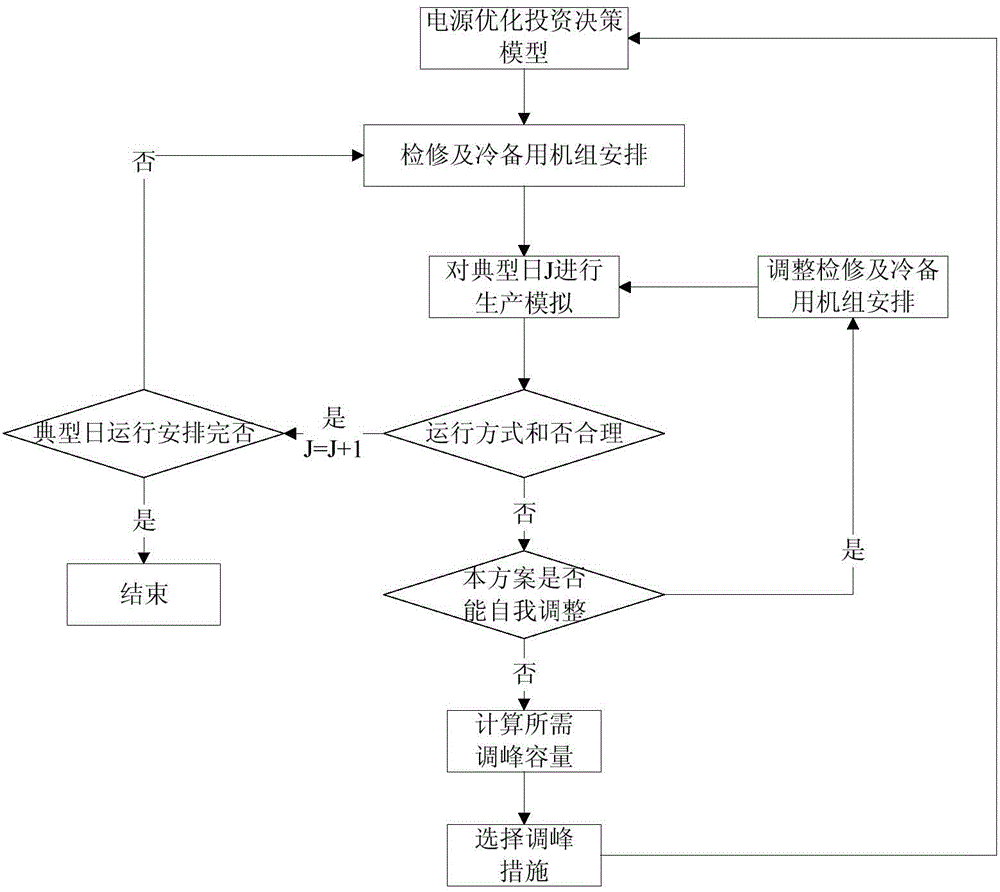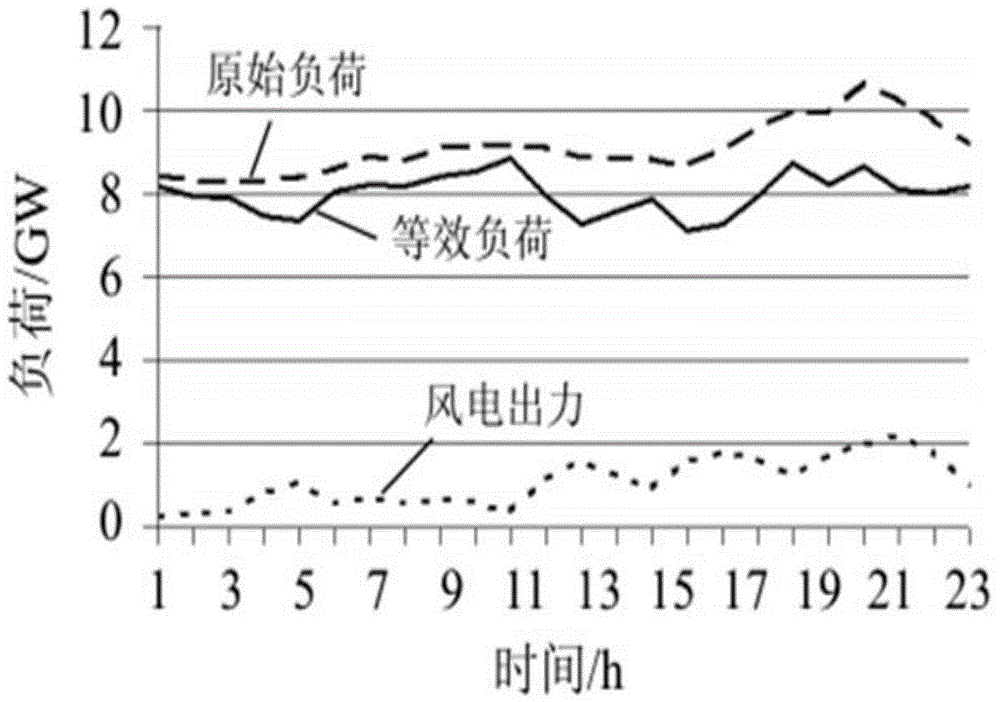Daily operation manner arranging and peak-load regulating method based on multi-scene new energy power generation simulation
An operation mode and new energy technology, applied in the field of daily operation mode arrangement and peak shaving based on multi-scenario new energy power generation simulation, to achieve the effect of reducing operation cost, speed and electricity
- Summary
- Abstract
- Description
- Claims
- Application Information
AI Technical Summary
Problems solved by technology
Method used
Image
Examples
Embodiment 1
[0094] Embodiment 1 (function test of pumped-storage unit put into operation in basic module test and peak-shaving measures):
[0095] Wind power output and photovoltaic output are shown in Table 3:
[0096] Table 3 Wind power and photovoltaic output (unit: 10,000 kilowatts)
[0097]
[0098] The system operation is as follows:
[0099] If no peak-shaving means are adopted, the valley value of the equivalent load of the system is 3.225 million kilowatts, and the base load of the thermal power unit is 4.275 million kilowatts. It can be seen that there is a peak-shaving problem in the system and it cannot be operated, so the first peak-shaving method is used to pump water The energy storage unit is running. After the pumped storage unit is put into operation, the valley value of the equivalent load of the system becomes 4.025 million kilowatts, and the base load of the thermal power unit is 3.969 million kilowatts, thus solving the problem of peak regulation in the system, ...
Embodiment 2
[0112] Embodiment 2 (basic module test and wind abandonment function test in peak shaving measures):
[0113] Increase the wind power output in the system to 1.5 times that of Example 1, change some coal-fired power units to nuclear power units with worse regulation capabilities, and some adjustable hydropower units to run-of-the-river hydropower units that cannot be adjusted to be affected by incoming water. Test Peak shaving capability of the system under harsher regulation. Wind power output and photovoltaic output are shown in Table 7:
[0114] Table 7 Wind power and photovoltaic output (unit: 10,000 kilowatts)
[0115]
[0116]
[0117] The system operation is as follows:
[0118]If no peak-shaving means are adopted, the valley value of the equivalent load of the system is 3.061 million kilowatts, and the base load of the thermal power unit is 4.644 million-kilowatts. It can be seen that there is a peak-shaving problem in the system and it cannot be operated, so t...
Embodiment 3
[0134] Embodiment 3 (basic module test and peak-shaving measures in the abandonment flow hydroelectric unit and change thermal power unit sorting function test):
[0135] Increase the wind power output in the system to 3 times that of Example 1, change some coal-fired power units into nuclear power units with worse regulation ability, change all local small hydropower into run-of-the-river hydropower units that cannot be adjusted and affected by incoming water, and test Peak shaving capability of the system under harsher regulation. Wind power output and photovoltaic output are shown in the table below:
[0136] Table 12 Wind power and photovoltaic output (unit: 10,000 kilowatts)
[0137]
[0138]
[0139] The system operation is as follows:
[0140] If no peak-shaving means are adopted, the valley value of the equivalent load of the system is 3.370 million kilowatts, and the base load of the thermal power unit is 4.844 million-kilowatts. It can be seen that there is a...
PUM
 Login to View More
Login to View More Abstract
Description
Claims
Application Information
 Login to View More
Login to View More - R&D
- Intellectual Property
- Life Sciences
- Materials
- Tech Scout
- Unparalleled Data Quality
- Higher Quality Content
- 60% Fewer Hallucinations
Browse by: Latest US Patents, China's latest patents, Technical Efficacy Thesaurus, Application Domain, Technology Topic, Popular Technical Reports.
© 2025 PatSnap. All rights reserved.Legal|Privacy policy|Modern Slavery Act Transparency Statement|Sitemap|About US| Contact US: help@patsnap.com



